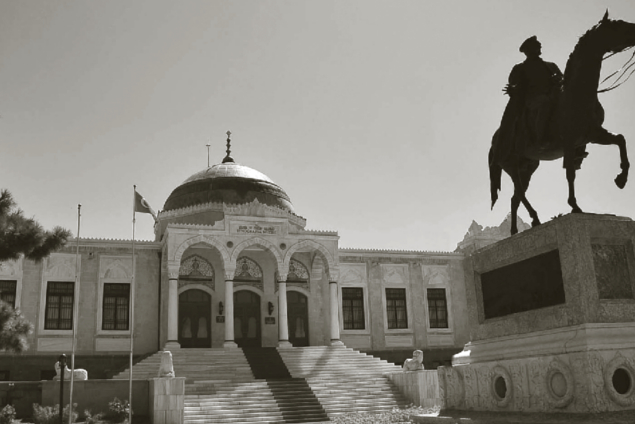
The Museum of Ethnography in Ankara
The foundations of the Museum of Ethnography were laid on September 25, 1925. The museum was designed to reflect the national character, history, and culture of the Turkish nation. Conceived as a “National Museum” upon the suggestion of Hungarian professor of Turcology J. Mészáros and the orders of Mustafa Kemal Pasha, the building was the first planned museum building of the Republic era.
The museum was located at the hill known as Namazgâh Tepe in the Hacettepe district of Ankara. Leading architect of the First National Architecture movement Arif Hikmet Bey (Koyunoğlu) was invited to create the design of the museum building. With the inspiration he drew from ancient Turkish architecture, Arif Hikmet Bey designed and completed the project in fifteen days.
After İsmet Pasha laid the founding stone of the building, construction was completed in 1926. Next, the objects acquired by the commission working under İstanbul Museums Director Halil Ethem Bey were brought from İstanbul to Ankara and were curated in light of the report prepared by Prof. Mészáros.
After construction was completed, former director of culture Hamit Zübeyr Koşay was appointed as the director of the museum on June 1, 1927. The same year, a massive equestrian sculpture of Atatürk was commissioned by the Ministry of National Education to be placed in front of the museum. Designed by Italian sculptor Pietro Canonica, the monument was inaugurated on November 4, 1927.
Ankara Museum of Ethnography opened its doors to the public on July 18, 1930. Used as a museum until 1938, the building was reorganized as a mausoleum upon Atatürk’s death and the Great Leader’s body remained there until it was moved to Anıtkabir in 1953. This section of the museum is still symbolically preserved as a mausoleum in honor of Atatürk’s memory.